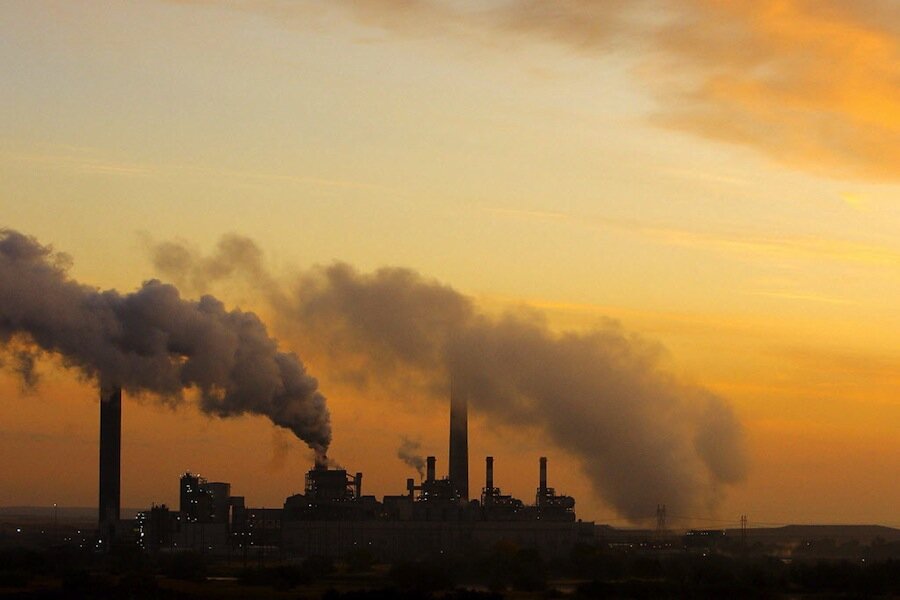This fascinating interactive shows each country’s greenhouse gas emissions
Loading...
| Washington
Climate negotiators meet in Paris this December to broker a global deal slashing greenhouse gas emissions. Their aim? Keep the planet from warming more than 2 degrees Celsius above pre-industrial temperatures.
But for 196 different countries to cut emissions enough to slow global warming, it’s critical to know exactly how much each country is emitting now – and where those emissions are coming from. A new data visualization created by the World Resources Institute, a global think tank, depicts those country-by-country emissions numbers in an interactive pie chart using data from CAIT Climate Data Explorer.
The graphic illuminates how each country contributes to global warming, and comes at a time when the three largest emitters have made big commitments to rein in emissions. China, at the top of the list, has pledged to reach its peak emissions levels by 2030, and is ahead of schedule, according to some forecasts. Europe, the No. 3 emitter, has promised some of the boldest emissions cuts in the world.
President Obama – head of state in the world’s No. 2 emitter – has made clinching a global deal limiting emissions a priority in his second term. Using executive authority, Mr. Obama has pledged to cut emissions from power plants, cars, trucks, and airplanes. Those policies are the US contribution toward the Paris talks, and will be combined with the rest of the world’s pledges to reach a final deal come December.
“That’s what we’re going to use to push other countries to join in global climate action,” Brian Deese, a White House climate and energy adviser, tells the New York Times.
To bolster the case for addressing climate change, the US Environmental Protection Agency rolled out a report Monday touting the public health and economic benefits of reducing greenhouse emissions. The report finds that tackling climate change will avoid “12,000 deaths annually associated with extreme temperatures in 49 U.S. cities, compared to a future with no reductions in greenhouse gas emissions.” The study also finds the US could save $7 billion dollars annually by 2100 in road maintenance alone if international action is taken on climate.
“[W]e can save tens of thousands of American lives, and hundreds of billions of dollars, annually in the United States by the end of this century,” EPA Administrator Gina McCarthy said in a statement Monday, adding that “the sooner we act, the better off America and future generations of Americans will be.”
Environmental groups like the Natural Resources Defense Council called Monday’s EPA report a “clarion call” to action on climate change.
“'EPA is highlighting the enormous benefits of taking decisive steps to curb climate change -- and the unacceptable consequences of inaction,” Rhea Suh, president of the NRDC, said in a statement Monday.
The centerpiece of Obama’s climate agenda is the EPA’s Clean Power Plan, which aims to slash the country’s power plant emissions 30 percent below 2005 levels by 2030.
Some US lawmakers and the fossil fuel industry have attacked the plan, pointing out that addressing greenhouse emissions too aggressively will entail a difficult – and possibly costly – switch from fossil fuels to renewable energy sources, like solar and wind.
"As we seek cleaner sources, we need to look at the reality today," says Jack Gerard, president and CEO of the American Petroleum Institute, an industry group. The reality, Mr. Gerard says, is that the US transition from coal to cleaner-burning natural gas has already slashed US emissions, and oil and gas will remain critical energy sources for years to come. "The world will consume energy. That’s how we lift people from poverty and give people opportunity."
Many in Congress have argued that unless the developing world switches away from emissions-intensive fossil fuels, US and EU action to cut emissions is useless.
That argument lost some traction with last fall’s historic US-China climate accord, when China demonstrated a bold drive to cut back on its booming coal consumption. But concerns remain, especially since India and other developing countries have yet to submit climate pledges towards December’s talks.
As negotiators wait on pledges from the developing world, WRI’s graphic visualizes which countries are responsible for the most emissions.
China, the US, and the EU top the list, as the pie chart makes clear – and all three have posted their contributions toward the climate deal. Those promised emissions cuts cover roughly half the world’s current total greenhouse gas output.





